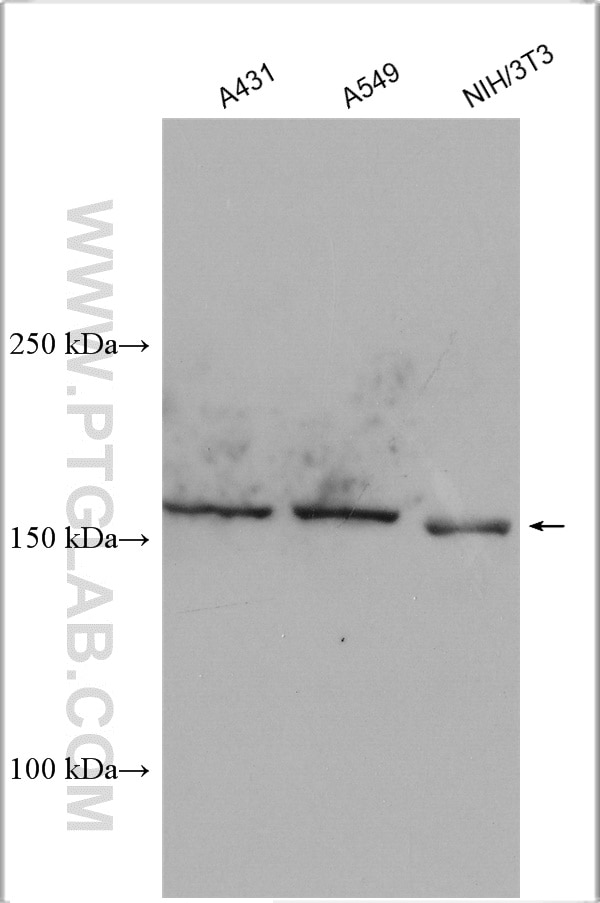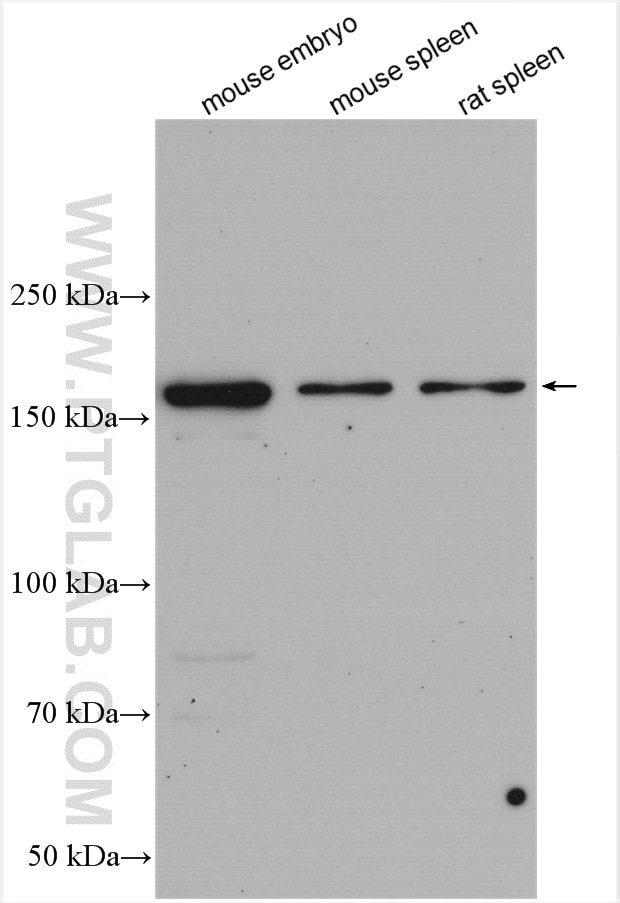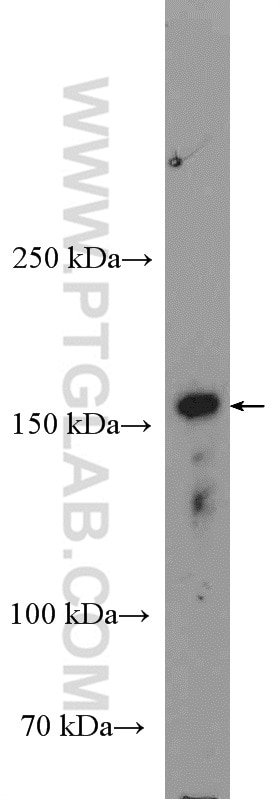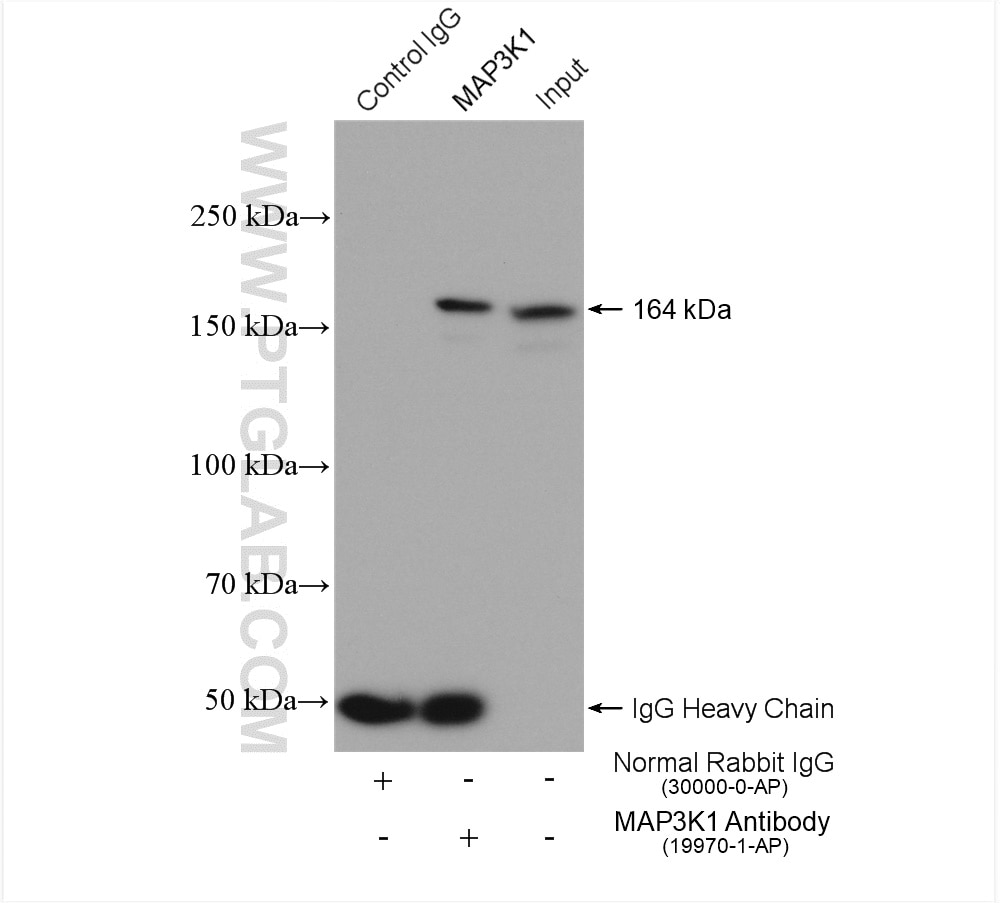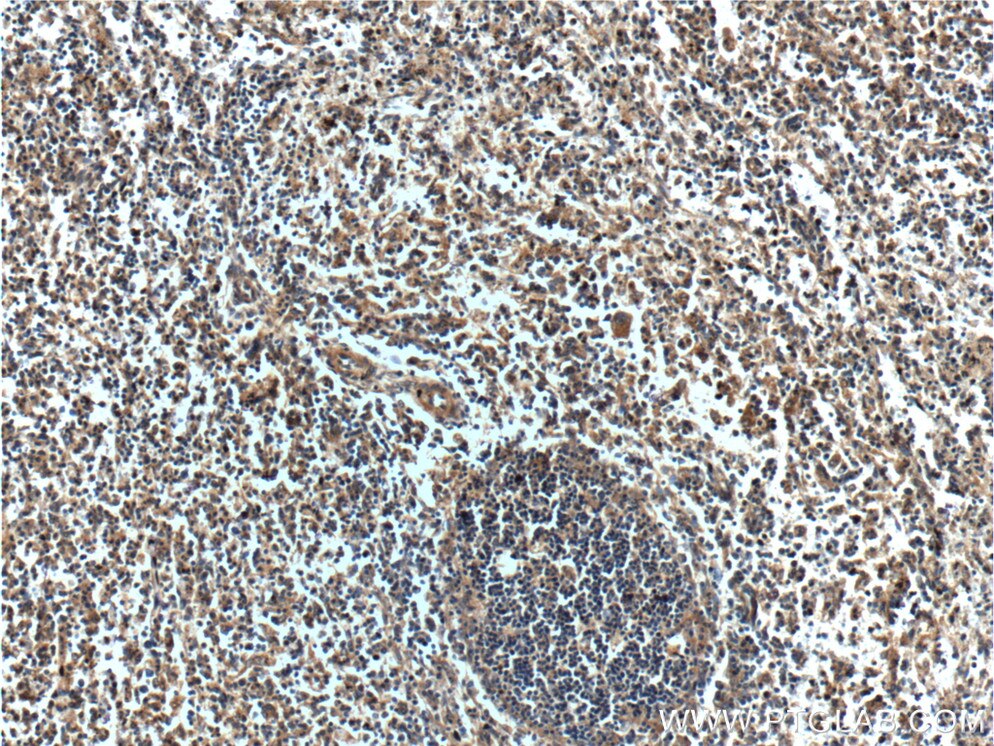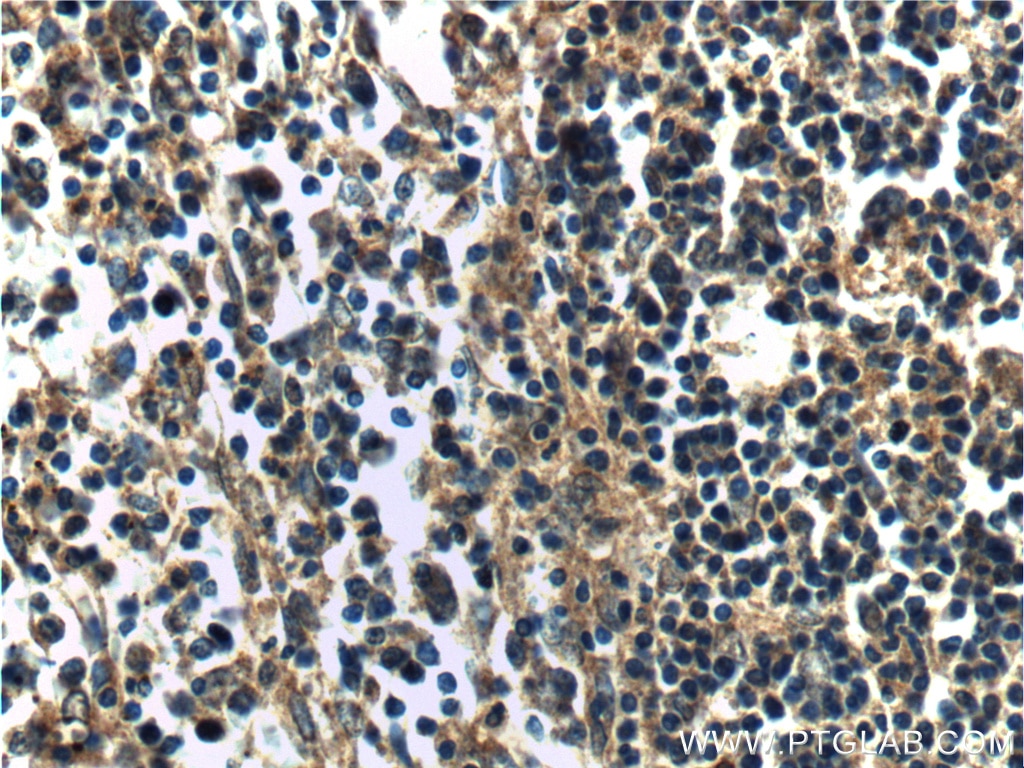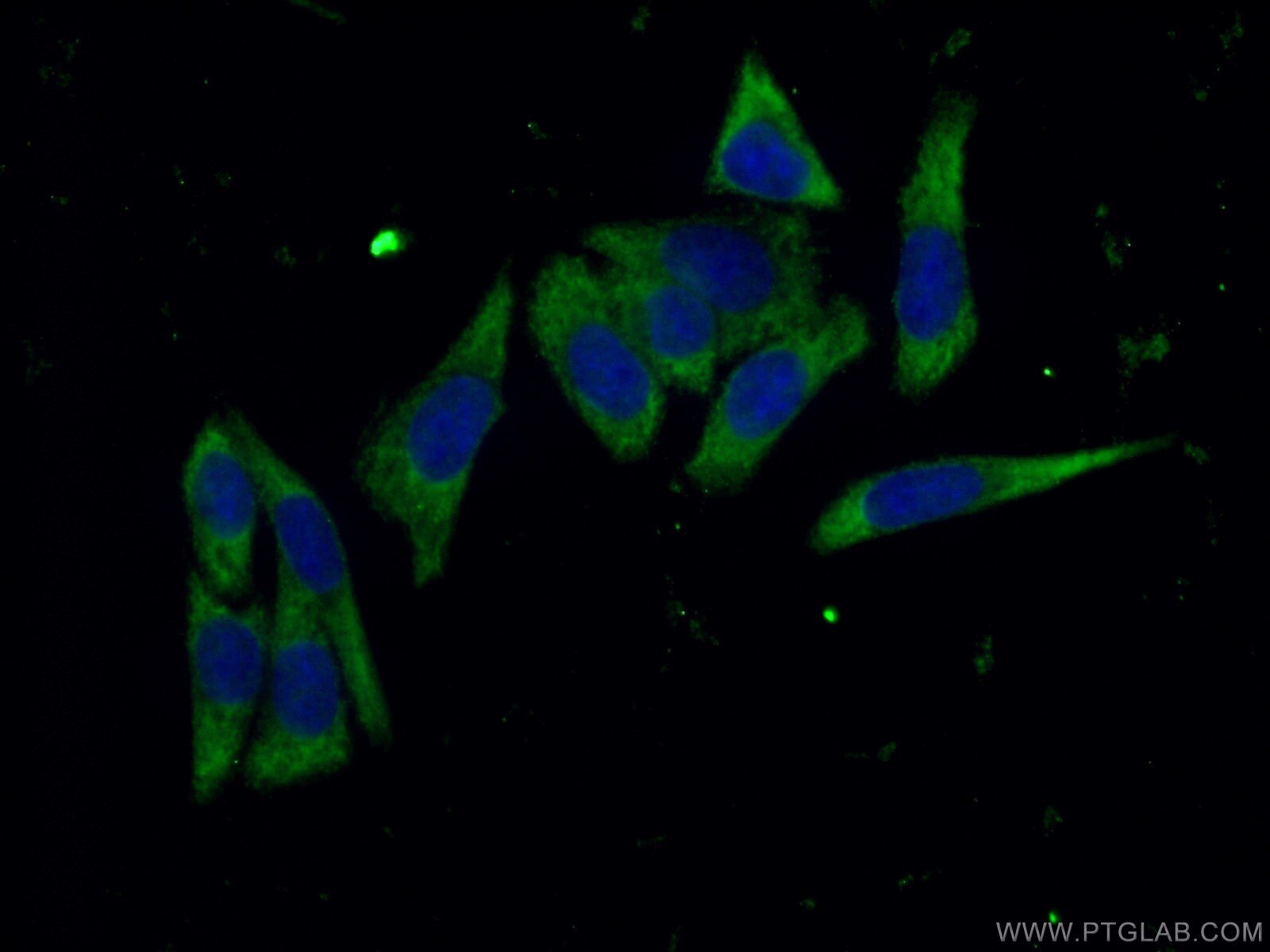- Featured Product
- KD/KO Validated
MAP3K1 Polyklonaler Antikörper
MAP3K1 Polyklonal Antikörper für IF, IHC, IP, WB, ELISA
Wirt / Isotyp
Kaninchen / IgG
Getestete Reaktivität
human, Maus, Ratte
Anwendung
WB, IP, IHC, IF, ELISA
Konjugation
Unkonjugiert
Kat-Nr. : 19970-1-AP
Synonyme
Galerie der Validierungsdaten
Geprüfte Anwendungen
| Erfolgreiche Detektion in WB | Mausembryogewebe, A431-Zellen, A549-Zellen, Mausmilzgewebe, NIH/3T3-Zellen, Rattenmilzgewebe |
| Erfolgreiche IP | NIH/3T3-Zellen |
| Erfolgreiche Detektion in IHC | humanes Milzgewebe Hinweis: Antigendemaskierung mit TE-Puffer pH 9,0 empfohlen. (*) Wahlweise kann die Antigendemaskierung auch mit Citratpuffer pH 6,0 erfolgen. |
| Erfolgreiche Detektion in IF | HeLa-Zellen |
Empfohlene Verdünnung
| Anwendung | Verdünnung |
|---|---|
| Western Blot (WB) | WB : 1:1000-1:4000 |
| Immunpräzipitation (IP) | IP : 0.5-4.0 ug for 1.0-3.0 mg of total protein lysate |
| Immunhistochemie (IHC) | IHC : 1:50-1:500 |
| Immunfluoreszenz (IF) | IF : 1:20-1:200 |
| It is recommended that this reagent should be titrated in each testing system to obtain optimal results. | |
| Sample-dependent, check data in validation data gallery | |
Veröffentlichte Anwendungen
| KD/KO | See 2 publications below |
| WB | See 10 publications below |
| IF | See 1 publications below |
Produktinformation
19970-1-AP bindet in WB, IP, IHC, IF, ELISA MAP3K1 und zeigt Reaktivität mit human, Maus, Ratten
| Getestete Reaktivität | human, Maus, Ratte |
| In Publikationen genannte Reaktivität | human, Maus |
| Wirt / Isotyp | Kaninchen / IgG |
| Klonalität | Polyklonal |
| Typ | Antikörper |
| Immunogen | Peptid |
| Vollständiger Name | mitogen-activated protein kinase kinase kinase 1 |
| Berechnetes Molekulargewicht | 164 kDa |
| Beobachtetes Molekulargewicht | 164 kDa |
| GenBank-Zugangsnummer | NM_005921 |
| Gene symbol | MAP3K1 |
| Gene ID (NCBI) | 4214 |
| Konjugation | Unkonjugiert |
| Form | Liquid |
| Reinigungsmethode | Antigen-Affinitätsreinigung |
| Lagerungspuffer | PBS mit 0.02% Natriumazid und 50% Glycerin pH 7.3. |
| Lagerungsbedingungen | Bei -20°C lagern. Nach dem Versand ein Jahr lang stabil Aliquotieren ist bei -20oC Lagerung nicht notwendig. 20ul Größen enthalten 0,1% BSA. |
Hintergrundinformationen
MAP3K1, also named as MAPKKK1, MEKK and MEKK1, belongs to the protein kinase superfamily, STE Ser/Thr protein kinase family and MAP kinase kinase kinase subfamily. MAP3K1 is a component of a protein kinase signal transduction cascade. MAP3K1 activates the ERK and JNK kinase pathways by phosphorylation of MAP2K1 and MAP2K4. It activates CHUK and IKBKB, the central protein kinases of the NF-kappa-B pathway. It catalyzes the reaction: ATP + a protein = ADP + a phosphoprotein. The antibody recognizes the N-term of MAP3K1.
Protokolle
| Produktspezifische Protokolle | |
|---|---|
| WB protocol for MAP3K1 antibody 19970-1-AP | Protokoll herunterladen |
| IHC protocol for MAP3K1 antibody 19970-1-AP | Protokoll herunterladen |
| IF protocol for MAP3K1 antibody 19970-1-AP | Protokoll herunterladen |
| IP protocol for MAP3K1 antibody 19970-1-AP | Protokoll herunterladen |
| Standard-Protokolle | |
|---|---|
| Klicken Sie hier, um unsere Standardprotokolle anzuzeigen |
Publikationen
| Species | Application | Title |
|---|---|---|
J Immunol Res Circulating miR-320b Contributes to CD4+ T-Cell Proliferation in Systemic Lupus Erythematosus via MAP3K1 | ||
Int J Biol Sci LncRNA SLCO4A1-AS1 predicts poor prognosis and promotes proliferation and metastasis via the EGFR/MAPK pathway in colorectal cancer. | ||
Int Immunopharmacol Extracellular vesicles secreted from mesenchymal stem cells exert anti-apoptotic and anti-inflammatory effects via transmitting microRNA-18b in rats with diabetic retinopathy. | ||
Biomed Pharmacother Xihuang pill promotes apoptosis of Treg cells in the tumor microenvironment in 4T1 mouse breast cancer by upregulating MEKK1/SEK1/JNK1/AP-1 pathway. | ||
Cell Death Dis LncRNA KCNQ1OT1 activated by c-Myc promotes cell proliferation via interacting with FUS to stabilize MAP3K1 in acute promyelocytic leukemia. | ||
Clin Sci (Lond) USP4 deficiency exacerbates hepatic ischaemia/reperfusion injury via TAK1 signalling. |
